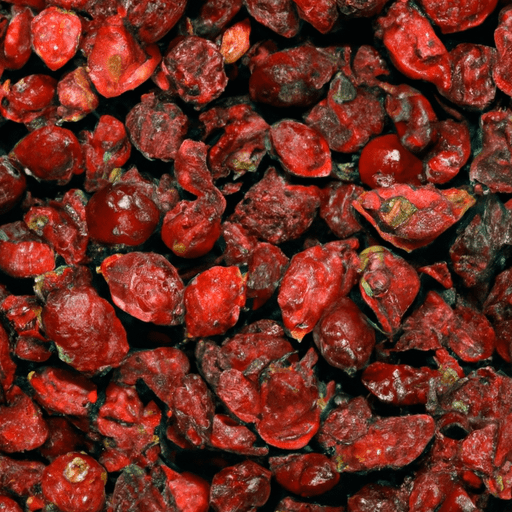The Versatile Delight of Dried Barberries: A Tart and Tangy Culinary Gem
If you’re searching for a vibrant ingredient to elevate your culinary creations, look no further than dried barberries. These tiny ruby-red gems are bursting with flavor, and their distinctive tartness adds a delightful twist to a variety of dishes. Get ready to embark on a journey exploring the taste, uses, nutritional value, and intriguing history of this versatile dried fruit.
Taste Sensation: Tartness with a Sweet Undertone
Dried barberries are known for their unique flavor profile. The taste of these small berries can best be described as wonderfully tart, often compared to cranberries or sour cherries. However, hidden within their tanginess, lies a delicate sweet undertone that adds depth to every bite. This contrasting combination of flavors makes dried barberries a truly special ingredient, perfect for adding a burst of zing to any dish.
Culinary Uses: From Savory Delights to Sweet Surprises
With their bold and tangy nature, dried barberries offer an array of possibilities in the culinary realm. Here are a few common uses that will inspire your creativity:
Middle Eastern Cuisine
In Middle Eastern cooking, dried barberries hold a prominent place. They are widely used to enhance the flavor of rice dishes, such as the famous Iranian Zereshk Polo. The vibrant red berries when mixed with fragrant basmati rice, caramelized onions, and aromatic spices, create a visually stunning and mouthwatering delight.
Baked Goods
Dried barberries bring a delightful twist to a variety of baked goods. Add them to muffins, scones, or cookies for a burst of tartness that perfectly balances the sweetness of the dough. The vibrant color of the barberries will also lend a stunning visual appeal to your creations.
Savory Dishes
Experiment by using dried barberries in savory dishes to introduce a tangy element. Sprinkle them over roasted vegetables, toss them in a salad, or use them as a topping for grilled meats. The burst of tartness will add a unique dimension to your savory creations.
Beverages
Don’t miss out on the opportunity to incorporate dried barberries into your beverage repertoire. Jazz up your tea by infusing it with these tangy berries or create a refreshing barberry lemonade that will tantalize your taste buds.
Nutritional Value: A Powerhouse of Antioxidants
Apart from its culinary advantages, dried barberries also boast an impressive nutritional profile. Packed with antioxidants, vitamins, and minerals, these little berries are a powerhouse of health benefits. Barberries are known to contain high levels of vitamin C, which supports your immune system and aids in collagen formation. Additionally, they provide a good dose of fiber, helping to promote a healthy digestive system.
A Glimpse into History: Ancient and Medicinal Roots
Dried barberries have a long and fascinating history. Dating back centuries, they have been used in traditional medicine in various cultures, renowned for their healing properties. Ancient Persian physicians, for instance, utilized barberries as a remedy for numerous ailments, ranging from an upset stomach to liver disorders.
Throughout history, barberries have also been used as natural dyes due to their vibrant red hue. In some cultures, they were even hung on doorways for protection against evil spirits.
Embrace the Wonder of Dried Barberries in Your Kitchen
From their distinctive taste to their vibrant color and fascinating history, dried barberries are an ingredient worth exploring. Incorporate them into your culinary creations to unlock a whole new world of flavors and experiences. Let the tantalizing tartness of dried barberries awaken your taste buds and transform your dishes into something truly extraordinary.
So go ahead, embark on your dried barberry adventure and let your creativity soar in the kitchen. These tiny ruby-red jewels are waiting to add their unique zing to your culinary masterpiece!
Dried Barberry
Origin: Dried barberry, also known as Zereshk, is native to Iran and has been cultivated there for hundreds of years. It is widely grown in regions with a Mediterranean climate.
Common Uses: Dried barberry is used in various cuisines around the world, particularly in Persian and Middle Eastern cooking. It is commonly used in rice dishes, stews, and desserts to add a tangy and slightly sour flavor. Dried barberry is also used as a garnish, in herbal teas, and as a natural dye for textiles.
Nutritional Benefits: Dried barberry is a good source of vitamin C, antioxidants, and dietary fiber. It also contains various minerals such as potassium, calcium, iron, and magnesium. Like other berries, it is low in calories and fat.
Unique Properties: Dried barberry is known for its vibrant red color and tart flavor. It has a natural acidity that can enhance the taste of dishes. The tart taste comes from the presence of natural tartaric acid in the berries.
Historical Significance: Barberry has a long history of use in traditional medicine. In Persian traditional medicine, it has been used for its anti-inflammatory properties and as a remedy for digestive issues. Additionally, barberry has been used as a dye and in herbal remedies in various cultures throughout history.




Use the share button below if you liked it.
It makes me smile, when I see it.